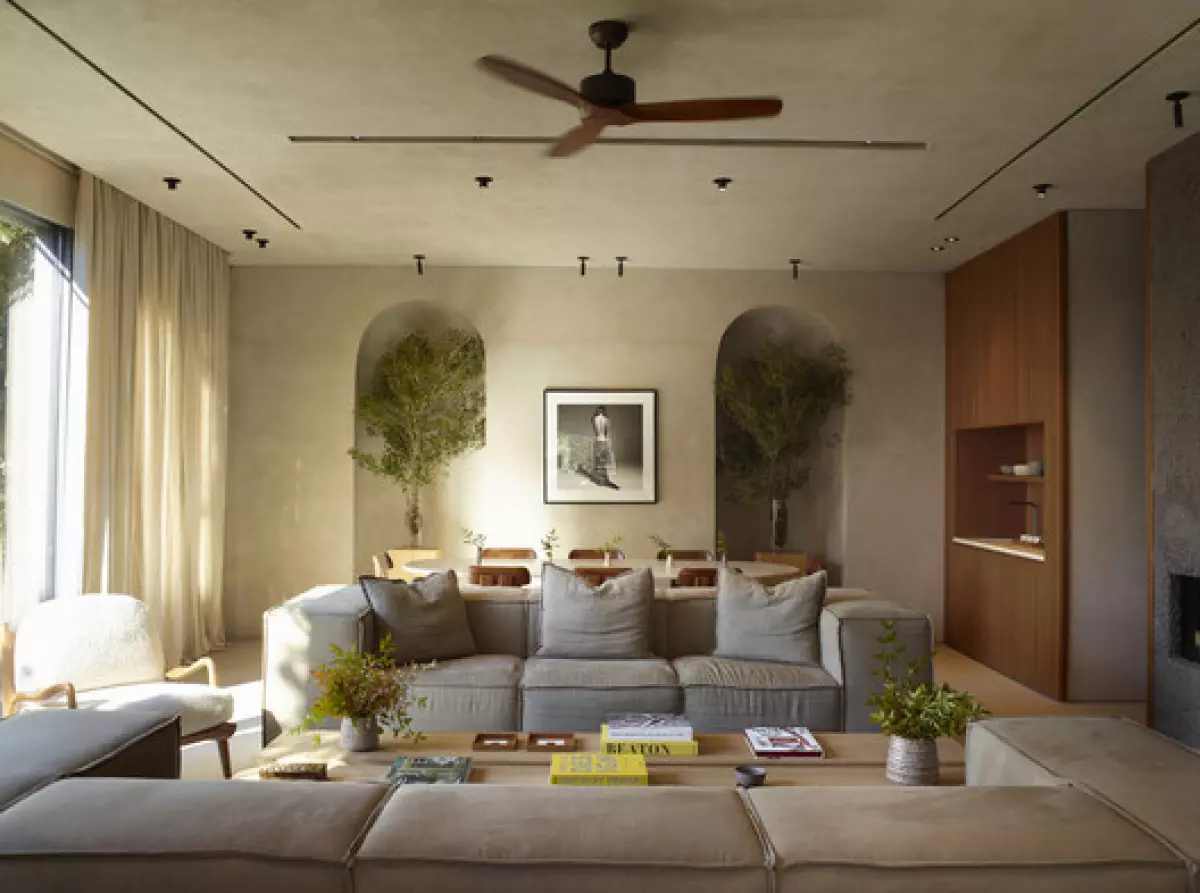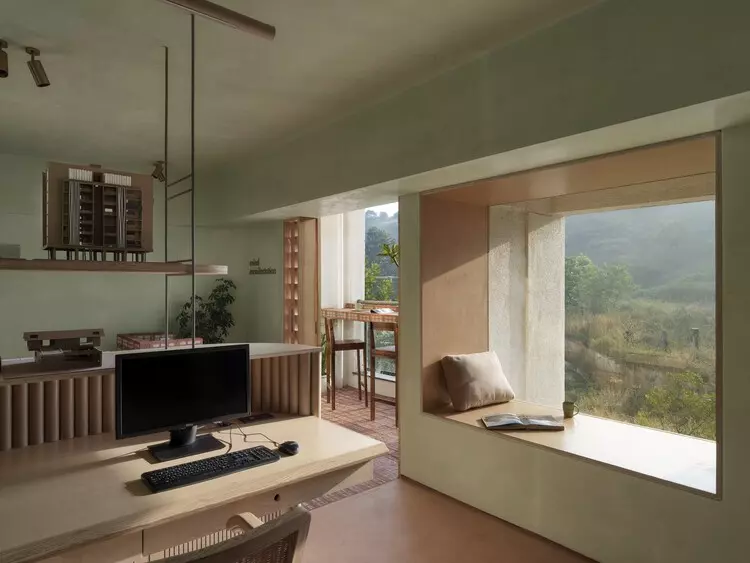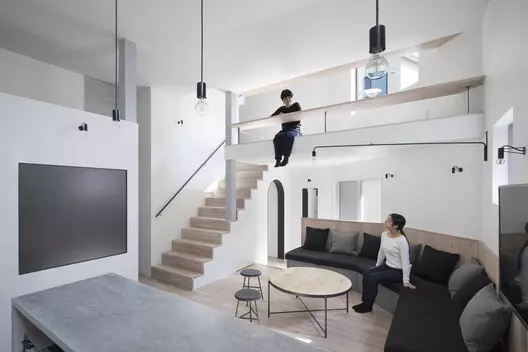 E Poolhouse / Habif Architects. Image © Vangelis Paterakis
E Poolhouse / Habif Architects. Image © Vangelis Paterakis
The past couple of decades have brought about significant changes in our society, economy, and environment. Naturally, these changes have influenced the field of architecture and urban design, sparking new concepts within traditional typologies. While user needs, practicality, and functionality have always been important in design processes, recent trends emphasize flexibility, privacy, inclusivity, and eco-consciousness. In this article, we will explore how current cities and living trends have reshaped interior design through 17 innovative projects from our database.
Work from Home

- 16
Traditional workspaces have undergone significant changes in the past decade. With the rise of startup culture, freelancing, and remote work, many individuals found themselves working from home during the pandemic. This sudden shift forced people to integrate offices into their living spaces, often at the expense of ergonomics, privacy, and well-being. As a response, architects began reimagining small-scale housing projects, implementing innovative solutions to accommodate work-from-home needs.
Some notable projects in this category include:
- Khiankhai Home & Studio / Sher Maker
- Varanda Building / Todot Architects and Partners
Co-Living
 Zeze Osaka Coliving House / SWING. Image © Eiji Tomita
Zeze Osaka Coliving House / SWING. Image © Eiji Tomita
As cities grow larger and urban density becomes a concern, architects and urban planners face the challenge of balancing privacy with communal living spaces. Co-living projects have emerged as a solution, providing private dwellings alongside shared communal areas. This community-driven typology allows unrelated individuals to live together while maintaining their own personal spaces. Multigenerational living has also seen a resurgence, with families opting for the "all under one roof" lifestyle.
Noteworthy co-living projects include:
- Zeze Osaka Coliving House / SWING
- LT Josai Shared House / Naruse Inokuma Architects
Multigenerational Living
Three Generation House / BETA office for architecture and the city. Image © Ossip van Duivenbode
In addition to co-living, multigenerational living has become a popular trend. With younger generations facing challenges in affording private housing and the elderly at risk of isolation, many families are embracing the idea of living together. Architects have designed spaces that cater to the needs of multiple generations, creating harmonious living environments where different age groups can coexist.
Remarkable multigenerational living projects include:
- Three Generation House / BETA office for architecture and the city
- House for 4 Generations / tomomi kito architect & associates
Sustainability
Sustainable design has become a crucial aspect of architecture, with a focus on achieving net-zero buildings and minimizing carbon emissions. Architects and urban planners are constantly exploring ways to make the built environment eco-friendly and energy-efficient. Strategies such as using local materials, integrating nature into architecture, and addressing the housing crisis have been implemented to create sustainable living spaces.
Local Materials
Sunyata Eco Hotel / Design Kacheri. Image © Shamanth Patil
Utilizing local materials is one way architects are reducing the environmental impact of construction. By sourcing materials locally, carbon emissions from transportation can be minimized. Projects in this category showcase the creative use of regionally available materials, blending seamlessly with the surrounding environment.
Noteworthy projects that prioritize local materials include:
- Sunyata Eco Hotel / Design Kacheri
- Kakapo Creek Children’s Garden / Collingridge And Smith Architects (CASA)
Direct Access to Landscape or Water
E Poolhouse / Habif Architects. Image © Vangelis Paterakis
Connecting interior spaces with the natural environment is another sustainable design approach. Projects aim to blur the boundaries between indoor and outdoor spaces, allowing occupants to enjoy direct access to landscape or water features. This integration fosters a deeper connection with nature and promotes well-being.
Projects that exemplify this approach include:
- E Poolhouse / Habif Architects
- Strong Arm House / MCK Architecture & Interiors
Biophilic Design and Bringing the Outdoors in
Scaffold House / Gaurav Roy Choudhury Architects GRCA. Image © Niveditaa Gupta
Biophilic design goes beyond direct access to nature, incorporating natural elements and materials within interior spaces. Architects create environments that evoke a sense of calm and well-being by bringing the outdoors inside. This approach enhances the overall livability of a space while maintaining a sustainable mindset.
Notable projects that embrace biophilic design include:
- Scaffold House / Gaurav Roy Choudhury Architects GRCA
- Biophilic Office / Andyrahman Architect
Micro-living
As more people migrate to larger cities, finding affordable and reasonably-scaled housing becomes a challenge. Micro-living has emerged as a solution, offering compact living spaces that provide the essentials while maximizing proximity to urban amenities. This trend is driven by factors such as financial constraints, changing lifestyles, and cultural shifts among millennials and Gen Z.
Projects that exemplify micro-living include:
- Apartment Renovation in Singapore / Studio Wills + Architects
- Uxolo Apartments / Two Five Five Architects
Wellness as a Priority
Google EMEA Engineering Hub / Camezind Evolution. Image © Camenzind Evolution
The COVID-19 pandemic has heightened the importance of wellness in architecture. Residential projects now integrate gyms, natural elements, and warm design aesthetics to promote physical, mental, and emotional well-being. In office spaces, employers have been prioritizing employee well-being for some time, creating environments that encourage relaxation, leisure, and improved performance.
Noteworthy projects that prioritize wellness include:
- Google EMEA Engineering Hub / Camezind Evolution
- AN Amsterdam Office / Studio Noun
- A Private Reading Room / atelier tao+c
These projects represent a fraction of how modern living trends have influenced interior architecture. By continuously adapting to societal changes and embracing sustainability and well-being, architects are creating spaces that cater to the evolving needs of individuals and communities.
Want to explore more interiors influenced by current cities and living trends? Check out our My ArchDaily folder curated by the author.
This article is part of an ArchDaily series that explores features of interior architecture. If you have any suggestions or ideas, please submit them.
This article is part of the ArchDaily Topics: Cities and Living Trends. Each month, we delve into a specific topic, exploring it through articles, interviews, news, and projects. Learn more about our ArchDaily topics. If you have an article or project to share, contact us.

















